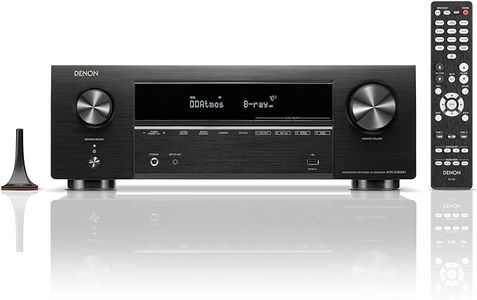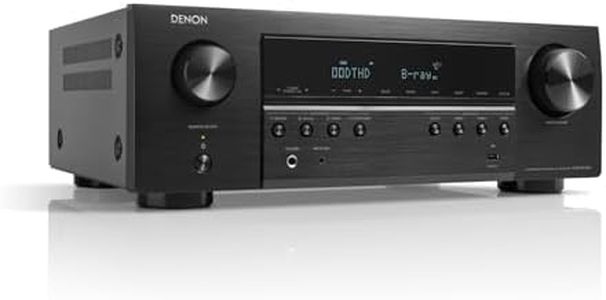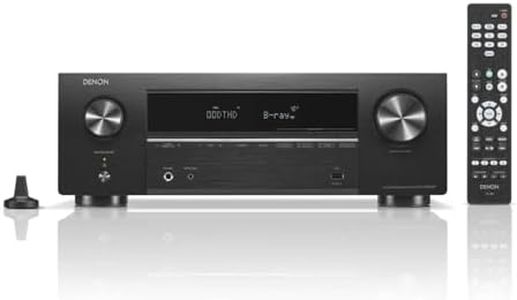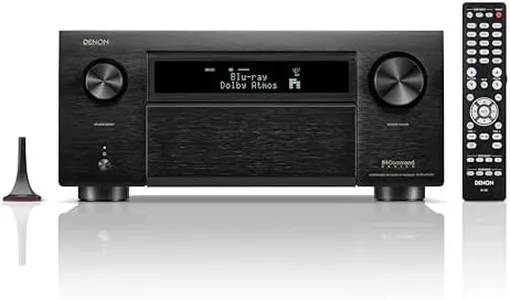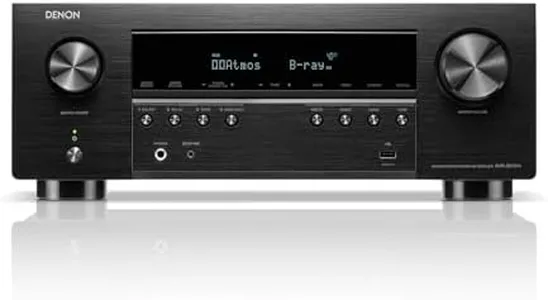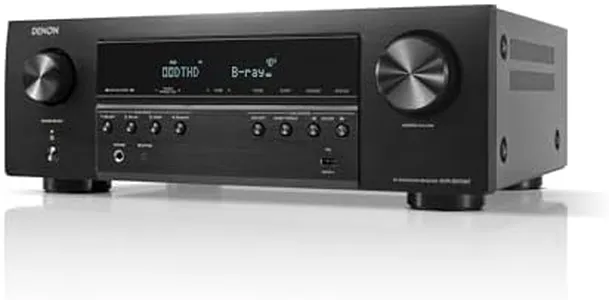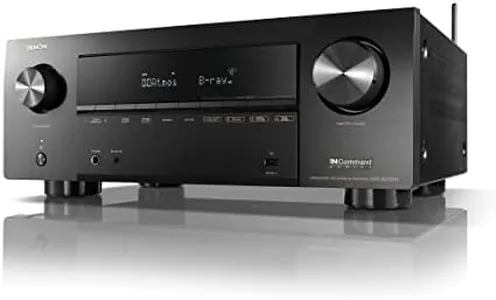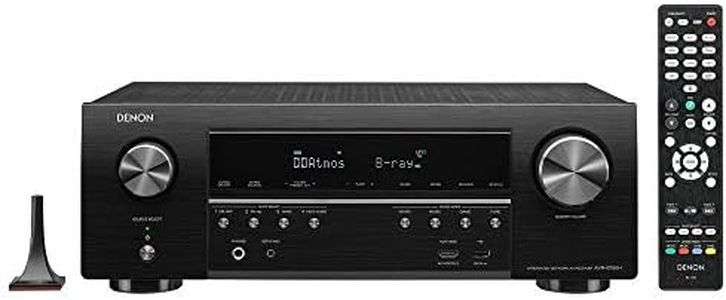We Use CookiesWe use cookies to enhance the security, performance,
functionality and for analytical and promotional activities. By continuing to browse this site you
are agreeing to our privacy policy
10 Best Denon Receivers
From leading brands and best sellers available on the web.By clicking on a link to a third party's website, log data is shared with that third party.
Buying Guide for the Best Denon Receivers
When it comes to choosing a Denon receiver, or any AV receiver, the goal is to find a model that fits your home theater or audio needs without overwhelming you with features you won't use. Denon receivers are known for their quality sound, flexibility, and wide range of features, making them great for both beginners and enthusiasts. Before picking a receiver, think about how you'll use it: Are you building a home theater? Looking for better music quality? Or connecting many devices? Paying attention to the key specifications helps you match the receiver to your setup, room size, and personal listening habits.Number of ChannelsThe number of channels tells you how many speakers the receiver can power at once—common values are 5.1, 7.1, or even 9.2 and above, where the first number is regular speakers and the second is subwoofers. More channels mean support for more immersive surround sound setups, but if you’re only using a couple of speakers, a basic 5.1 receiver is enough. If you plan to expand to a full home theater with overhead or extra surround speakers, choose a receiver with more channels. Pick the number of channels based on how many speakers you want now—plus a little room for future upgrades.
Power Output (Watts Per Channel)Power output, measured in watts per channel, tells you how much audio power each speaker gets from the receiver. Higher wattage generally means louder, clearer sound, especially in larger rooms or with more demanding speakers, but real-world differences can be small. Small rooms and basic speaker setups do fine with lower wattage, while large spaces or higher-end speakers may need more. Your room size and speaker sensitivity are good guides: for most home use, moderate power is plenty, but for big rooms or powerful speakers, look for higher wattage per channel.
Inputs and OutputsInputs and outputs are the physical ports that let you hook up everything from TVs and gaming consoles to music players and recorders. HDMI ports are best for most modern gear, while optical, coaxial, and analog connections cover older devices. More ports give you more flexibility, but think about what devices you plan to use. Make sure the receiver has enough HDMI, audio, and video inputs for everything you want to connect now and in the near future.
Audio Format SupportThis spec lists which surround sound formats the receiver handles—like Dolby Atmos, DTS:X, and basic Dolby Digital or DTS. High-end formats create more realistic, 3D sound with supported speakers, but you only need them if you plan to use matching content and speaker setups. If you enjoy movies with immersive soundtracks or want future-ready features, pick a receiver that supports advanced formats; for simple TV or music use, basic format support is plenty.
Network and Streaming FeaturesModern receivers often connect to your Wi-Fi or Ethernet network, letting you stream music from services, control the receiver with your phone, or integrate with smart home devices. Features like Bluetooth, AirPlay, and Chromecast compatibility also make it easier to play audio wirelessly. If you want to play music from your phone or the internet, or use voice assistants, pick a model with strong network and streaming support. If you always use physical connections or don’t stream music, simple networking is fine.
Room Calibration and Auto-SetupRoom calibration features (sometimes called auto-setup) automatically adjust the speaker levels and sound settings based on your room’s acoustics, often using a small microphone you place in your listening area. This can make a big difference in sound quality, especially in rooms with unusual shapes or furniture. For most users, having automatic setup makes getting good sound much easier, so look for a receiver with good calibration tools if you want hassle-free setup or don’t want to tweak audio settings manually.
